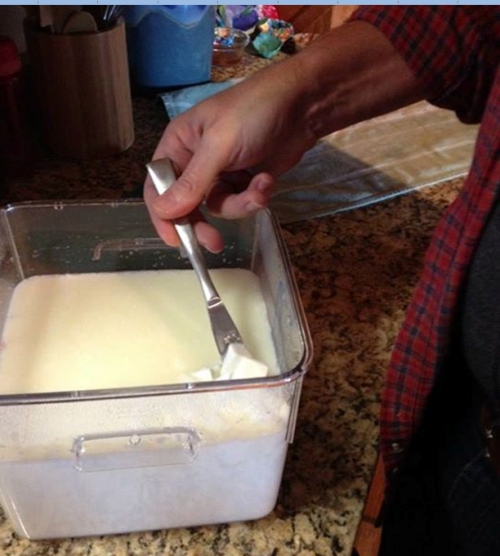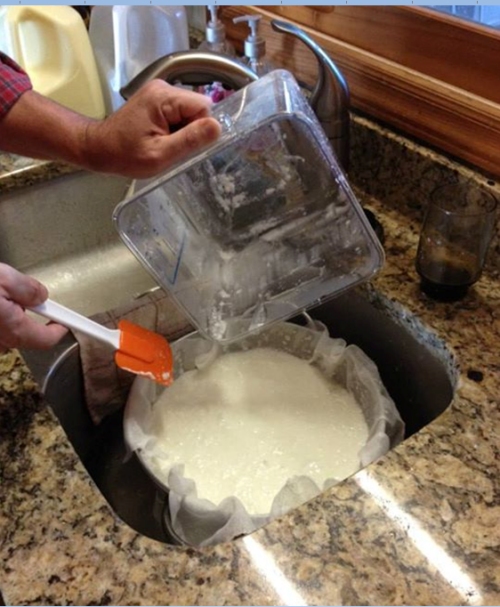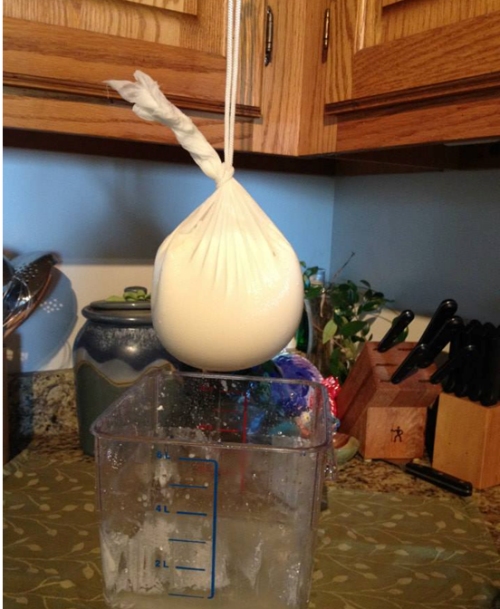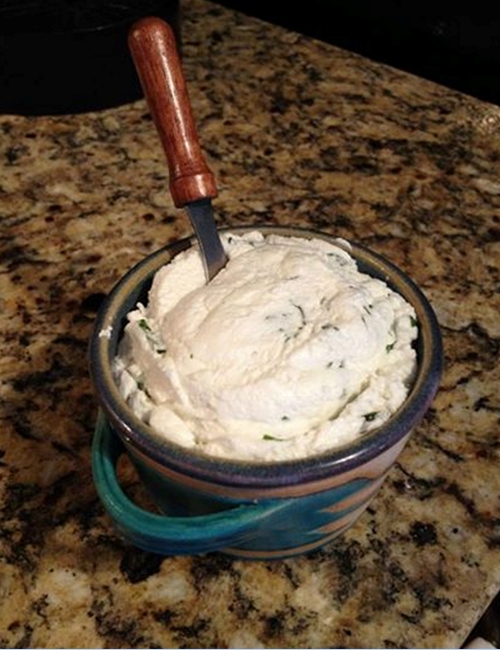
*Making Cheese*
By: Casey
04 November 2014
So, a couple of weeks ago, my girls went to a birthday party that was held out at a horse farm. It's a place where they teach horseback riding, and do a lot of charitable work with disabled people and the horses. Turns out that the folks who run this place, while not exactly preppers, are in to a lot of self-reliant living. In addition to horses, they also raise chickens, and have goats and sheep. While my wife was there, she overheard the woman who runs the place talking about making cheese from the milk she got from her goats. My wife expressed interest, and two weeks later, we were at the farm, sans kids, learning about making goat cheese. We left there with a gallon of goat's milk, some fine cheese cloth, and a 'culture' specifically for making Chevre, or soft goat cheese.
We got home, warmed the goat's milk up to 85 degrees Fahrenheit, add the culture, stirred it in well, then poured it into a sealable container. We wrapped a towel around the container, to help maintain the temperature, which is optimal for growth of this particular culture, and let it sit over night. The following morning, we had Curds and Whey!

I ran a knife down through it in a crisscross pattern, to break up the curds, and allow more whey to be released. Then, it was pouring into a colander lined with fine cheese cloth, to allow most of the whey to drain off.

After that, the edges of the cheese cloth were gathered together, and the whole thing was lifted out, and suspended by a rope, over the original container, to allow even more whey to drain from the soupy mixture.

This took two to three hours, and actually, can vary depending on how 'soft' you like your cheese. I'm not a big fan of soft cheeses, so I let it hang for almost three hours, and drained almost another quart of whey out of the cheese.
Once that was done, and the cheese had reached the desired texture, we tasted it. It was okay, but very bland, so this is the point where we add 'stuff' to make it more palatable. We separated it out into four different bowls, to try different flavors. In one, we left it plain, adding only some finely ground sea salt, which turned out quite good. In another, we added honey and cinnamon, to make a sweet cheese, this of course, was the favorite of the kids. My favorite was sea salt and garlic powder, gave it a nice taste that balanced the tang of the goat cheese. My wife's favorite, pictured below, is sea salt, and fresh chopped basil from the herb garden.

While soft cheeses are not my favorite, they make a good addition, and accent, to a lot of dishes. We had to make a steak and baked potato dinner shortly after, and added a bit of our cheeses to the baked potato, and a little dribbled over the steaks, and it makes a really enhanced and already good meal.
The lady that runs the farm, also milks her sheep. Apparently dairy sheep are fairly rare here in the US. However, the milk fat content of sheep's milk is much higher than either goat or cow's milk, and is quite prized, especially for making Feta cheese. We're trying to get her to do a class on Feta, and give out some sheep's milk. If we do, I'll be sure to share that as well.
Casey
www.alpharubicon.com
All materials at this site not otherwise credited are Copyright © 1996 - 2014 Trip Williams. All rights reserved. May be reproduced for personal use only. Use of any material contained herein is subject to stated terms or written permission.